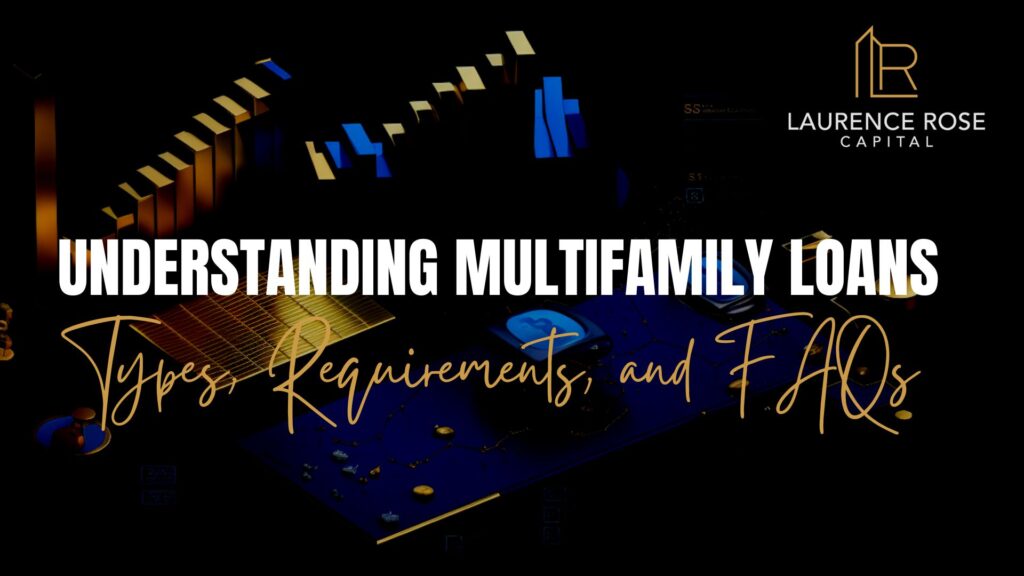Investing in multifamily real estate can be a lucrative and rewarding venture. However, it requires careful planning and consideration of various factors to ensure success. Below is a step-by-step guide to help you navigate the process, along with prime factors to consider:
Step 1: Define Your Investment Goals
- Determine your financial objectives and investment goals. Are you looking for long-term cash flow, appreciation, or a combination of both? Clarifying your objectives will guide your investment strategy.
Step 2: Set a Budget
- Evaluate your financial position and determine how much capital you can invest. Consider your own funds and potential financing options like mortgages or partnerships.
Step 3: Research Real Estate Markets
- Conduct thorough research on different real estate markets. Look for cities or areas with strong population growth, job opportunities, and a diverse economy. Stable and growing markets tend to offer better investment prospects.
Step 4: Identify Multifamily Properties
- Search for multifamily properties that align with your investment criteria. Consider factors such as location, property size, number of units, amenities, and potential for value-add opportunities.
Step 5: Perform Due Diligence
- Once you find a potential property, conduct thorough due diligence. Evaluate its financial performance, rental history, maintenance status, and potential risks. Engage professional inspectors and appraisers to assess the property’s condition.
Step 6: Secure Financing
- Arrange financing for the property if needed. Explore different loan options, compare interest rates, and terms from various lenders to secure the best financing package.
Step 7: Analyze Cash Flow and Projections
- Project the property’s cash flow and potential returns. Factor in expenses such as property management fees, maintenance costs, taxes, and vacancies to determine the property’s profitability.
Step 8: Structure Partnerships (if applicable)
- If you’re considering forming partnerships with other investors, define the terms, roles, and responsibilities clearly in a partnership agreement.
Step 9: Negotiate and Purchase
- Negotiate the purchase price and terms with the seller or their representative. Work with a real estate agent or attorney to ensure a smooth and legally sound transaction.
Step 10: Property Management
- Decide whether you will manage the property yourself or hire a professional property management company. Property management is critical for maintaining tenant satisfaction and ensuring the property’s overall success.
Prime Factors to Consider:
- Location and Market Fundamentals: Choose a location with strong rental demand and potential for long-term growth. Analyze market fundamentals like job growth, population trends, and development plans.
- Property Condition: Evaluate the property’s condition and any potential renovation or improvement needs. A well-maintained property can attract better tenants and yield higher returns.
- Cash Flow Potential: Focus on properties with positive cash flow or the potential to generate it after factoring in all expenses and contingencies.
- Risk Management: Assess potential risks such as economic downturns, market saturation, or unexpected maintenance costs. Diversification across properties and markets can help mitigate risks.
- Legal and Regulatory Factors: Stay informed about local zoning laws, rental regulations, and landlord-tenant laws. Compliance is essential to avoid legal issues.
- Exit Strategy: Have a clear exit strategy in place. Decide whether you plan to hold the property long-term or sell it after achieving certain appreciation targets.
- Professional Advice: Seek advice from experienced real estate professionals, including real estate agents, attorneys, accountants, and property managers.
Remember that successful multifamily real estate investing requires patience, research, and a well-thought-out strategy. Keep learning and adapting to the ever-changing real estate market to make informed decisions and achieve your investment goals.
Types of Multifamily Real Estate Properties
There are various types of multifamily real estate properties, each with its own characteristics and appeal to different types of tenants and investors. Here are some common types:
- Apartment Buildings: These are large structures that consist of multiple individual apartments, each with its own kitchen, living space, and bathroom. Apartment buildings can vary in size, ranging from small complexes to high-rise buildings with numerous units.
- Condominiums (Condos): Condominiums are similar to apartments in terms of layout, but they are individually owned units within a larger building or complex. Owners have the right to sell or rent out their units, making them an attractive option for both investors and owner-occupants.
- Townhouses: Townhouses are multi-level properties that share walls with neighboring units. They are typically larger than apartments and condos and often have their own entrance and outdoor space.
- Duplexes and Triplexes: Duplexes contain two separate units, while triplexes have three units. These properties are a form of small-scale multifamily housing, making them popular choices for first-time investors.
- Quadplexes (Fourplexes): Quadplexes consist of four separate units within a single building. They offer a slightly larger scale of investment compared to duplexes and triplexes.
- Mixed-Use Buildings: These properties combine residential units with commercial spaces. For example, a mixed-use building might have retail stores or offices on the ground floor and apartments or condos on the upper floors.
- Garden Apartments: Garden apartments are typically low-rise buildings with units spread out over landscaped grounds. They often have outdoor amenities and a more suburban feel.
- Mid-Rise and High-Rise Apartments: These are apartment buildings with multiple floors, usually ranging from five to over 20 stories. High-rise buildings are more common in urban areas and offer impressive views and amenities.
- Senior Housing: Senior housing properties cater to older adults and may include independent living communities, assisted living facilities, or memory care facilities.
- Student Housing: Student housing properties are specifically designed to accommodate college and university students, often located close to campuses.
- Affordable Housing: These properties provide housing for low-income individuals or families and may receive government subsidies or tax incentives.
- Co-Living Spaces: Co-living properties offer shared living spaces with private bedrooms and shared common areas, appealing to young professionals and those seeking a sense of community.
Each type of multifamily property has its own advantages and target demographic. When investing in multifamily real estate, it’s essential to consider factors such as location, rental demand, potential for value appreciation, and your investment goals to determine the most suitable property type for your portfolio.






![How Does Creative Financing Work In Multifamily Real Estate [Explained]](https://laurencerosecapital.com/wp-content/uploads/2023/10/JG-BMP-Ira-LRC-JB-Blog-Covers-750-×-422px-1920-×-1005px-1024x576.jpg)
